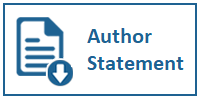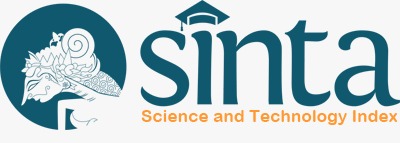Enhancing Intelligent Tutoring Systems through SVM-Based Academic Performance Classification and Rule-Based Question Recommendation
DOI:
https://doi.org/10.31937/ti.v17i1.4178Abstract
The aims to automatically classify students' academic performance levels using Support Vector Machine (SVM) algorithm and automatically recommend questions based on classification results. Dataset consists of six assignment scores per student, averaging students into three performance levels: Beginner, Intermediate, and Advanced. Before training, the data undergoes preprocessing involving normalization with Standard Scaler and splitting into training and testing sets. The model is trained using Radial Basis Function (RBF) kernel with hyperparameter tuning to optimize its performance. The evaluation results show that the model achieved an accuracy of 91.67%, with a precision of 93.06%, a recall of 91.67%, and an F1-score of 91.89%. The best performance was found in the Intermediate class, the dominant category in the dataset, while performance in the Advanced category was relatively lower due to limited sample size. Following classification, a rule-based recommendation system is used to suggest questions that match the student's predicted level of competence. This approach supports a more adaptive and personalized learning environment. The findings demonstrate that the SVM algorithm effectively supports intelligent learning systems such as the Intelligent Tutoring System (ITS). Future work should include data balancing techniques, expansion of dataset size, and comparative analysis with other algorithms to enhance model generalization.
Downloads
Additional Files
Published
How to Cite
Issue
Section
License
Copyright (c) 2025 Fenina Adline Twince Tobing, Toto Haryanto

This work is licensed under a Creative Commons Attribution-ShareAlike 4.0 International License.
Authors retain copyright and grant the journal right of first publication with the work simultaneously licensed under a Creative Commons Attribution-ShareAlike International License (CC-BY-SA 4.0) that allows others to share the work with an acknowledgement of the work's authorship and initial publication in this journal.
Authors are able to enter into separate, additional contractual arrangements for the non-exclusive distribution of the journal's published version of the work (e.g., post it to an institutional repository or publish it in a book), with an acknowledgement of its initial publication in this journal.
Copyright without Restrictions
The journal allows the author(s) to hold the copyright without restrictions and will retain publishing rights without restrictions.
The submitted papers are assumed to contain no proprietary material unprotected by patent or patent application; responsibility for technical content and for protection of proprietary material rests solely with the author(s) and their organizations and is not the responsibility of the ULTIMATICS or its Editorial Staff. The main (first/corresponding) author is responsible for ensuring that the article has been seen and approved by all the other authors. It is the responsibility of the author to obtain all necessary copyright release permissions for the use of any copyrighted materials in the manuscript prior to the submission.















